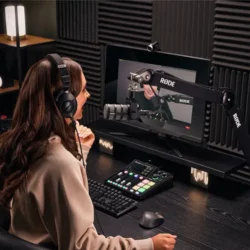Seems that this is advice given to anyone who wants to buy a sound system for a venue today. Everyone is an expert of course: The mate who has a decent surround system at home, the guy who used to play in a band or your friendly Hi-Fi enthusiast. Even the guy who annoys everyone with a 130dB system in his car has a view. All experts and they are telling you “buy a line array”.
Or do you?
Let’s face it, Line Array is the current buzzword and the ultimate solution to all audio needs – or so one is led to believe. In this short article, while avidly avoiding complicated technical jabber, I want to explain why a line array can be the wrong solution. The number of clients, who approach us and have almost no comment about the system design – except that it has to be a line array, is now approaching 100%. It is true that correctly designed (many are not) true line arrays (some so called line arrays are just a bunch of point source boxes stacked together) can produce exceptional results in the right conditions. But therein lays the main problem: the right conditions.
The basic characteristics of a line array are that it will provide a tight, controlled vertical coverage with a wide, even horizontal coverage. In addition, in terms of level drop over distance (inverse square law) the norm is -3dB for doubling of distance versus -6 dB with point source. However, this is not true over the entire distance and needs qualifying. Just for the sake of this article, lets say that line arrays “throw” sound further than point source systems. Another caveat is control at what frequency. If you want a line array to control frequencies down to 1,000Hz it needs to be 1.4 meters long. Some manufacturers have design features, which mitigate these issues to some degree but a very short line array (say 3 boxes) will not behave much better than a point source box with the same design characteristics. However, line array components tend to provide more flexible building blocks and avoid the need to stock many different point source boxes. Consequently, it is quite common to see short arrays of just a few boxes, providing a very intelligible solution in a reverberant space. So what’s the problem?
The principles of a well designed sound system are that it will faithfully reproduce the source material (A), put everyone in the coverage pattern of the system only (not spraying sound over reflective walls & ceilings) (B) and provide even coverage (C) so the SPL is similar throughout the venue. Let’s ignore (A) for now and assume that all of the solutions to consider are high enough quality (regardless of line array or point source) to provide an accurate reproduction. The problems will be with (B) & (C).
If your venue has a low ceiling, a line array is almost certainly the wrong solution. Yes, you could stack up a row of boxes – or hang them from the ceiling but the small difference between head height and the ceiling is going to render the system useless in terms of coverage, as there is no “angle” available to point the system down. It will just fire over everyone’s head while tearing the face off the punters in the first few rows. A point source, distributed point source or high density ceiling system is what is needed in this case.
If the venue is small – say no dimension greater than 20 meters – then a line array is not what is needed. Simply no benefit as a quality point source system will deliver excellent results at a better price performance ratio. Now and then, the room might be highly reverberant (typically also with a high ceiling) and a small line array will produce a better result. In short, a small room with OK acoustics should be point source – not line array.
Finally, a line array will produce even coverage over a large space but from a single point (or more) in the room. If you need the coverage to change in different areas, a well designed, distributed point source system will work far better. Take the example of a nightclub where the owners want the high SPL on the dance floor, lower levels at the bars and nearby seating areas, a higher power seating zone plus a separate system in the VIP area. Investing massive amounts of money in a line array system covering the whole club would be completely the wrong approach.
Bear a few more facts in mind. The near field performance of a line array is generally poor compared to middle and further distances. If a high percentage of the listening audience is going to be very close to the speaker system, a line array is not the right approach. A badly designed and installed line array will be poor in terms of audio quality – regardless of brand. (This is also true of point source systems). Remember, a sound system is a chain of components working together. The system will only be as good as the weakest link.
So when you are approaching a supplier for new sound system, do not insist that it has to be line array. It might be exactly the right solution – but it may not. Over the last couple of years a significant percentage of the line array systems we have been “forced” to install (the owners would accept no alternative) were wrong for the venue. A better result at lower cost could have been achieved using a point source system. There is no kudos involved here. The punters do not walk into a place a say “Wow, these dudes have a got a line array, they must be the tits”. They just care about good sound (not always, sadly) regardless of the “technology”. Insisting on a line array because you have been told it’s the hottest new technology is not intelligent or making you appear knowledgeable. It’s probably costing you money you don’t need to spend and diminishing the potential result.
Tony Oates





